This post was originally published, in part, on Kelly Wheaton’s blog WheatonWood. The original post was inspired by a pamphlet that she had been trying to get corrected, or removed from sale, for many years by a Family Genealogy Association. What follows is a collaboration with Dale Sheldon with additional content specific to the Isaac Sheldon question.
BACKGROUND
We Sheldons have now been attempting to rediscover our English origins for almost two centuries, and thankfully some (the Godfrey line) has done just that. In the 1657 Will of Ellen Frost Goodale of Bakewell, Derby, England, discovered in 1931 – she lists her sisters, Alice and Sarah, as the wives of brothers Godfrey and William Sheldon. The parish records of Bakewell also record the marriage of Godfrey Sheldon and Alice Frost in 1620 and this same couple is later found in Maine. These facts are important to remember going forward.
In the 1830’s the teenage Rev. Henry O. Sheldon set off on his travels in the new American northeast as a circuit preacher – primarily New York, Vermont, Massachusetts, Rhode Island, and Connecticut. His journals (a copy of which is owned by Dale Sheldon) indicates that he met several Sheldons over the years and developed a personal interest in understanding his own family origins. Some of those that he spoke with were quite elderly, such as Hannah Sheldon Reynolds of Rhode Island who was 93 years of age when they met in 1844. That places her birth at 1751. There was also a Moses Sheldon of the same age and an Isaac Sheldon in Northampton whom he described as a “miser” worth up to $100,000. Unfortunately he doesn’t detail their discussions but we know that he was gathering Sheldon history and his primary purpose to visit these elders would be to get the earliest knowledge of the family available to him. If Hannah and Moses were born c1751 – they would have personally known earlier members of their family born as early as the 1670’s, people with direct knowledge of the first Sheldons to cross the pond.

The Parish of the Rev. Hewitt at Knowle, West Midlands, England. Previously part of the historic County of Warwickshire. © Copyright Bill Boaden, reuse Creative Commons Licence
The stories that were passed down to him, and the multitude of Sheldons he met across the country, allowed him to build an incredible genealogical work that he published as The Sheldon Magazine in 1855. His one big mistake was assuming that all of the colonial Sheldon families were of the same English origin. This combined with the common story of the three Sheldon brothers passed down multiple lines independently of one another, he built a theoretical tree to the best of his ability. Considering the limitations that he was working under, and the absence of DNA, it’s incredible just how close he managed to get.
This narrative began with three brothers – Isaac, William, and John. This Isaac, specifically, was listed as of “Dorchester, Mass”. He in turn was listed as the father of another Isaac Sheldon, born 1629 with the note “removed from Windsor, Ct. 1654”. This younger Isaac was listed further down the page as having died in 1708 and the husband of Mary Woodford and Mrs Mehitable Ensign. At this point some historical context is important. The Dorchester Company was a failed company that arrived at what is now Dorchester, Massachusetts in 1630 but, having failed and refused passage back to England, the group moved on to founding a new settlement at what is now Windsor, Connecticut in Feb 1637. However, no one by the name of Sheldon is recorded in the early records of Dorchester – so why would the Rev. list Isaac as being of that place and not simply Windsor? In the Corbin Collection Vol II, Part II by the New England Genealogical and Historical Society “Northampton Early Families”, they have a notation for the younger Isaac as follows: “Isaac Sheldon came from Eng with Rev. Hewitt to Windsor CT this year [1639]”.
This would explain it, the Rev. Ephraim Hewitt came from Warwickshire, England where several branches of a large Sheldon family are located. His group was not part of the original Dorchester company, and therefore do not show up in their earlier records. They only arrived later in 1639 and quickly moved on to Windsor were the rest of the Dorchester company had already settled. And it was at Windsor, in 1640, that we find the first record of Isaac Sheldon. But this 1640 record, I’m sorry to say, has been a point of contention for decades. The apparent fact that Isaac Sheldon was originally from the Dorchester Company, whether with the original company or with the Rev. Hewitt, lived on with little opposition until an article was published in 1926.
WHEN “PROBABLY” TURNS OUT TO BE WRONG
The original article appeared in none other than the highly respected New England Historical and Genealogical Register. And it points out a major issue with printed genealogical matter. What was true nearly one hundred years ago, with additional information, may not prove to be true now. The article is titled The Sheldons of Bakewell, Derbyshire, England and Isaac Sheldon of New England by J. Gardner Bartlett of Boston. In this case the author handled the material beautifully and it has much valuable information on both the descendants of Isaac Sheldon of Windsor, Connecticut AND the Sheldons of Bakewell, Derbyshire, England. So far so good.
Note the operative word is “probable.” Then further on we get more of the squishy word “probable” and a “presumably”
And finally continued on the next page the probable is now “identical.”
The “supposed date of birth”. Bartlett, in addition to his squishy language, is making two very important mistakes:
- He gives reference to the 1651 Will of Arthur Sheldon of Ashford, Derby in which is listed his “grandchild Isaac”. This Isaac, IF born in 1629 would have been 22 years old but is still listed as “grandCHILD” while his older brothers are listed before him as “grandSON” in the same document. He is assuming that this Isaac must be the same as our Isaac who WAS born c1629 and later living in Northampton. It is more likely that this “grandCHILD” was actually a child and therefore could not have been our Isaac. If he could have proven that this Isaac of Ashford was in fact older, it may have been a fairly reasonable assumption considering how uncommon the name Isaac was at the time, but no baptism has ever been found. This is not surprising as many “perish” ;) registers have been lost over the last 300 years. In fact, the parish records for the Rev. Ephraim Hewitts parish in Warwickshire for 1629 have been lost, leaving additional room for the possibility that our Isaac was from Warwickshire, and a member of Hewitt’s congregation, and not of Derbyshire.
- He must also ignore the earlier Isaac entirely, father of the Isaac born c1629, and the land records in his name recorded at Windsor in 1640. If our Isaac was the son of Ralph, grandson of Arthur, of Ashford, then the earlier Isaac in Windsor could not have existed. And yet – the records are there.
THE OPPOSITION
That brings us to the next chapter in our saga!
As early as 1886 people were trying to conflate the two Isaac’s of Windsor into a single person and there was a great deal of disagreement and regular changing of minds by these early genealogists. In that year, as written in his work “History of Deerfield”, George Sheldon accounts the following:
“Sheldon, Isaac, of Dorchester 1634; rem. with part of the congregation of Rev. John Warham in Sep 1635, to find a plantation at Windsor, Conn. I copy from the original record at Windsor that: Isaac Sheldon owned there Jan. 10, 1640 a home lot of 3 acres, with house, barn, and orchard “purchased of John Stiles;” another lot of 3 acres, “purchased of Richard Samwas,” and another lot “purchased of Thomas Parsons.” One of lots was bounded on two sides by “his own land;” which may have been given him in the original distribution. But these four lots were not original assignments, but were obtained by purchase.
These particulars are given in a disputed case, and to prove that Isaac Sheldon was of full business age at this time. Some genealogists insist that this Isaac was the same man who testified before a court in Northampton Mar 25, 1679, that he was “about 50 yrs. old”. If this be true, then he was but six when he went to Windsor, and but 11 when he held for pieces of real estate by purchase, and doubtless a large area by assignment. It is true that land was sometimes given to minors in the original division of plantations, but who ever heard of a boy of 11 buying house lots and meadow land? While being satisfied that Isaac of Windsor was of age, I can give no further account of him or his family. I assume that the Isaac of Northampton was his son, because in 1652 he is found in possession of this land at Windsor. Not unlikely Isaac had other sons and went away to live with them; am still (1886) engaged with H. S. Sheldon of West Suffield, Ct., in an exhaustive search for the original Simon pure Isaac.”
I choose to let the above stand as printed in 1886 as explanatory, and to present subsequent confusion; since 1886 it has been shown that the entries at Windsor given above as being headed, “Jan 10, 1640″ were really made at a later date to utilize a blank page; with this fact established, all evidence of the above Isaac disappears. Isaac (1) is the true head of this Sheldon family”
So George Sheldon gives a sound argument for there being two Isaac’s, but changes his stance in the last moment without a clear explanation. Then Bartlett, in 1926, reiterates George Sheldons 1886 findings – that the 1640 land was really written later and undated.
Skip ahead a couple more decades to a publication by Mary Lovering Holman, “Genealogy of the Stevens-Miller Family” (1948) in which she details several holes in Bartlett’s assumptions and therefore decides to omit the Derby ancestry from her publication. Although she does not mention the 1640 document issue, she does add that “although our Isaac had 8 sons and 6 daughters, not one of them bears the name of his supposed father, mother, or grandfather” in the Derby clan.
Then we have the publication of “Sheldons Prior to 1700” by E. Hortense Sheldon (1961). Hortense was really quite a brilliant researcher and genealogist. In her book she included a chapter that she called “The Isaac Controversy” in which she also details the Bartlett and Holman accounts and reaches the same conclusion that Holman initially had but decided that she must find out the truth of the 1640 document for herself:
Well, I had to be proven, so I went to Windsor to see the originals and found them in the State Library at Hartford, Conn. There were 11 pages (p. 33, back of 36 to 44) each dated at the top Jan. 11, 1640. George Sheldon and others state Jan. 10th but it is really the 11th on the original book. The page on which Isaac Sheldon’s transactions were recorded, was in the middle of those 11 pages on p. 40. After careful and lengthy examination of the 10 pages with the page of Isaac Sheldon’s I asked a genealogist in the room at the time and the gracious librarian and we all three agreed that the date Jan. 11, 1640 should stand for the following reasons:
- The ink was the same color.
- The thickness of the quill pen used was the same.
- The style of handwriting was the same – capitals and small letters.
- The slant of the letters, and the size of the letters was the same.
The recorder of the later date had a different style, different slant, different size and form of letters, different thickness of pen, and different color of ink.
True, the recorders had gone back and utilized blank pages at the bottom of the pages, in fact they not only went back once, but again the second time, making three entries to some pages. However, in once going back, the ink for a time was green, and in each case the size and style of writing was a distinct contrast from the early writing. One was smaller, in fact very tiny writing, and the other was much larger. So that page could not have been written in at a later date. It was done on Jan. 11, 1640 to the first Isaac Sheldon.
To their next point of argument. I, too, found the order, used by all to prove their arguments, passed at a meeting by the townsmen on Sept. 13, 1652 to allow Isaac Sheldon and Samuel Rockwell to keep house, as quoted above. But all failed to find, or at least mention in their arguments, a previous ruling on single men not being allowed in town over night.
Quote of date 1637 “The forefathers enacted: ‘No master of a family shall give habitation or entertainment to any young man to sojourn in his family, but by the allowance of the inhabitants of the said town where he dwells, under the penalty of 20 shillings per week.”
I wondered at such a ruling, until I found that a ship of prisoners were brought over and those jail-birds and vandils had been let loose in New England to rob, plunder, molest and attack the settlers. Then I could understand the law and the reason for its being made.
With that official order how could Isaac arrive in Windsor as late as 1652 and be allowed to stay in the town long enough for the townefolk to establish his character and worthiness and to buy property and to secure permission to keep house. That would seem to point to the fact that he had lived in the town for some years – at least prior to the ruling of 1637. In other words he had grown up in Windsor.”
She also goes on to make several additional excellent points, among them being the following:
In the 2nd item [land record for Isaac] – quote: “bounded east by that which was William Rockewell’s”. Now, William Rockwell died in 1640 and probably no settlement had been made at the time of this transaction, Jan. 11, 1640, so they could not use the name of the new owner. Certainly by 1652, the later date on which George Sheldon claims his lots were bought, they would not have referred to land owned by a man who died 12 years previously, but would have bounded it by the present owner. In 1640, it was the only way it could be written.
This evidence by E. Hortense seems overwhelmingly clear, the first record of Isaac Sheldon at Windsor WAS in 1640. The only point that we might disagree on is whether he came to Windsor with Rev. Warham in 1635 (as part of the rest of the Dorchester group), or with Rev. Hewitt in 1639 (as a new joining group) – and keep in mind that there is no record of Isaac with the rest of that first Dorchester company, and the Rev. Hewitt was from a part of Warwickshire with many ties to the Sheldon family of that area.
Hortense notes that Isaac must have lived in the area prior to the 1637 ruling in order for the town to find him trustworthy, but he also would have been given that trust if he arrived with Rev, Hewitt in 1639 – it being clear that they were not among those from the prison ship. The second point for 1635 arrival was that he seemed to own land that was of the original lots, not recorded in 1640, but she also goes on to explain that the colony had failed to record several of the early land purchases which later led to several land disputes among the colonists. If he purchased land in 1640, it’s also possible that he had purchased an earlier lot from one of the original 1635 settlers in 1639, that purchase having not been properly recorded but mentioned in the boundaries of the 1640 record.
THE MODERN ERA
In the meantime trees everywhere have Isaac Sheldon connected to Ralph Sheldon in Derbyshire. It happens in a thousand other ways daily. But let’s really hammer the nail in the coffin for Bartlett and Holman. Fast forward to 2014 when Kelly Wheaton contacted the Family Tree DNA project administrators for the Sheldon DNA Project: Peter & Jeanne Jeffries. There were no groupings in the project and it was difficult to see who was related to whom when she contacted them. In short order she organized the project into groups without knowing anything about the 5 Sheldon progenitors. She was then able to tell Peter and Jeanne that 3 Progenitors fell into one grouping and two in the other.
The three that were in the first group, which Kelly named Group A, were descended from the Sheldons of Bakewell in Derbyshire including the Richard, John of Providence, and Godfrey lines (the same Godfrey mentioned at the start of this post). Since that time we have also had testers in England match this group who also have paper trails to Derbyshire, further confirming that all Group A Sheldons originated in that area. The other 2, which she called Group B, had a separate origin. These include Isaac of Windsor and John of Newport and Kingston, Rhode Island – although the English origins for this group have not yet been confirmed with 100% certainty, our working theory is that they are from the Sheldons of Warwickshire, which have an entirely separate historical origin than the Derbyshire Sheldons, and likely arrived with the Rev. Hewitt as noted previously.
An interesting additional note is that the Warwickshire Sheldons that Group B are almost certainly descended from also include the well know landed gentry family, the Sheldons with estates at Beoley, Weston Park, Broadway, Spetchley, Hailles, and others and the Ralph Sheldon “the Great”, creator of the Sheldon tapestries and the Sheldon Folio, a first folio copy of the complete works of Shakespeare. This group originally had the Sheldon coat of arms with the three ducks. Both Dale Sheldon and Kelly Wheaton, authors of this post, are descendants of this group. The Group A lines includes Gilbert Sheldon, Archbishop of Canterbury. He was the son of a servant but had risen to such a high rank that he earned his own coat of arms and became one of the most powerful men in England. The College of Arms noted at the time that they could find no familial connection to the Sheldons of Beoley, and therefore could not grant him the same arms, but assumed that there must be an ancient connection, and therefore issued him arms that were very similar. His arms also had three ducks but instead of a bar, his had a chevron, and the colors were inverted.
The assumption by the College of Arms was incorrect. As Kelly Wheaton discovered in her DNA analysis, the two groups are not even closely related as Group A is YDNA Haplogroup E and Group B is YDNA Haplogroup R, with their common ancestry several thousand years in the past and long before either ever reached the British shores – let alone adopted surnames. So no matter how hard one might like the evidence to line up and prove the Bartlett and Holman genealogies – it does not. There are a lot of takeaways from this:
- Older genealogies, even from reputable sources, must be checked against newer evidence
- If you are aware of problems with older evidence we all have a responsibility to correct it whenever we can
- Just because we find a baptism or birth for someone with the same name does not mean they are the same person
- Like any scientific pursuit we are often dealing with “working theories” until better evidence presents itself, we should not be wedded to anything
- If we belong to, or know of, an organization selling outdated materials we need to lobby to get them amended or removed from sale
Sadly that last one has taken us years and has been quite contentious–attacking sacred cows can be difficult and hazardous to your health. But somehow having the TRUTH prevail is its own reward. At the end of the day we can only point the way—people will believe what they want to believe. Kelly just did a search for Isaac Sheldon on Ancestry and he appears in 16,325 public trees. Of the first ten pages of trees every single one has Isaac Sheldon as the son of Ralph Sheldon (1605-1651) and Barbara Stone – all erroneous. Correcting the record is an uphill battle. That does not mean we should not keep at it.
For the Record: we welcome edits, corrections, and new information. We learn from our mistakes as opposed to those that never make them. [winks]
Kelly Wheaton and Dale Sheldon © 2022. All Rights reserved
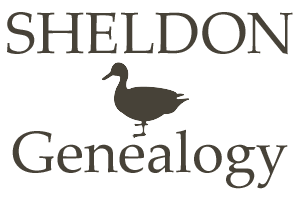
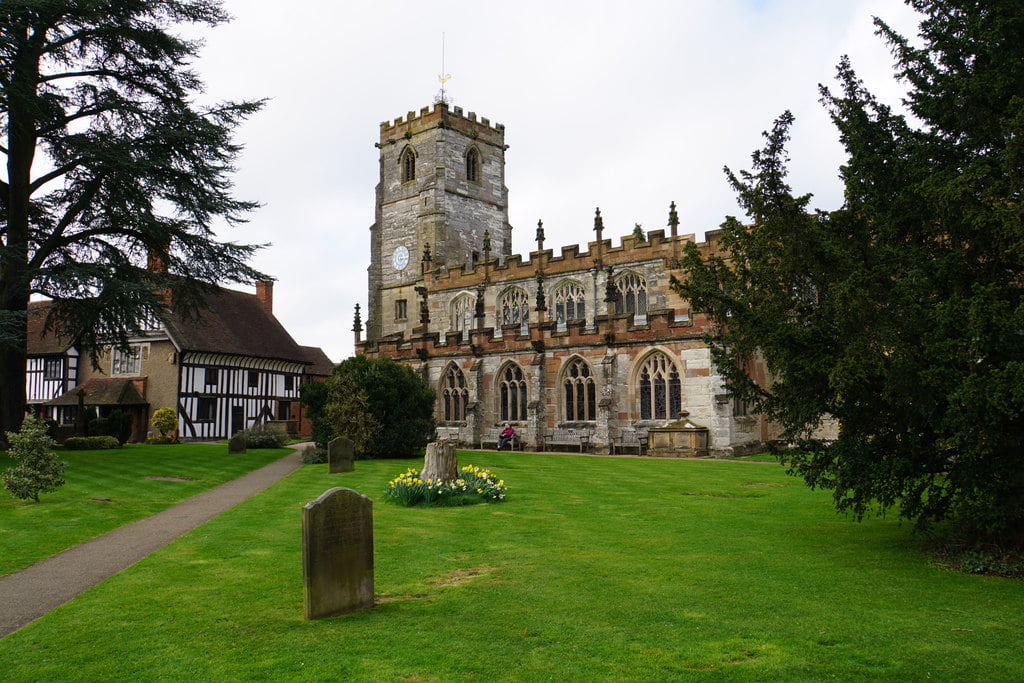


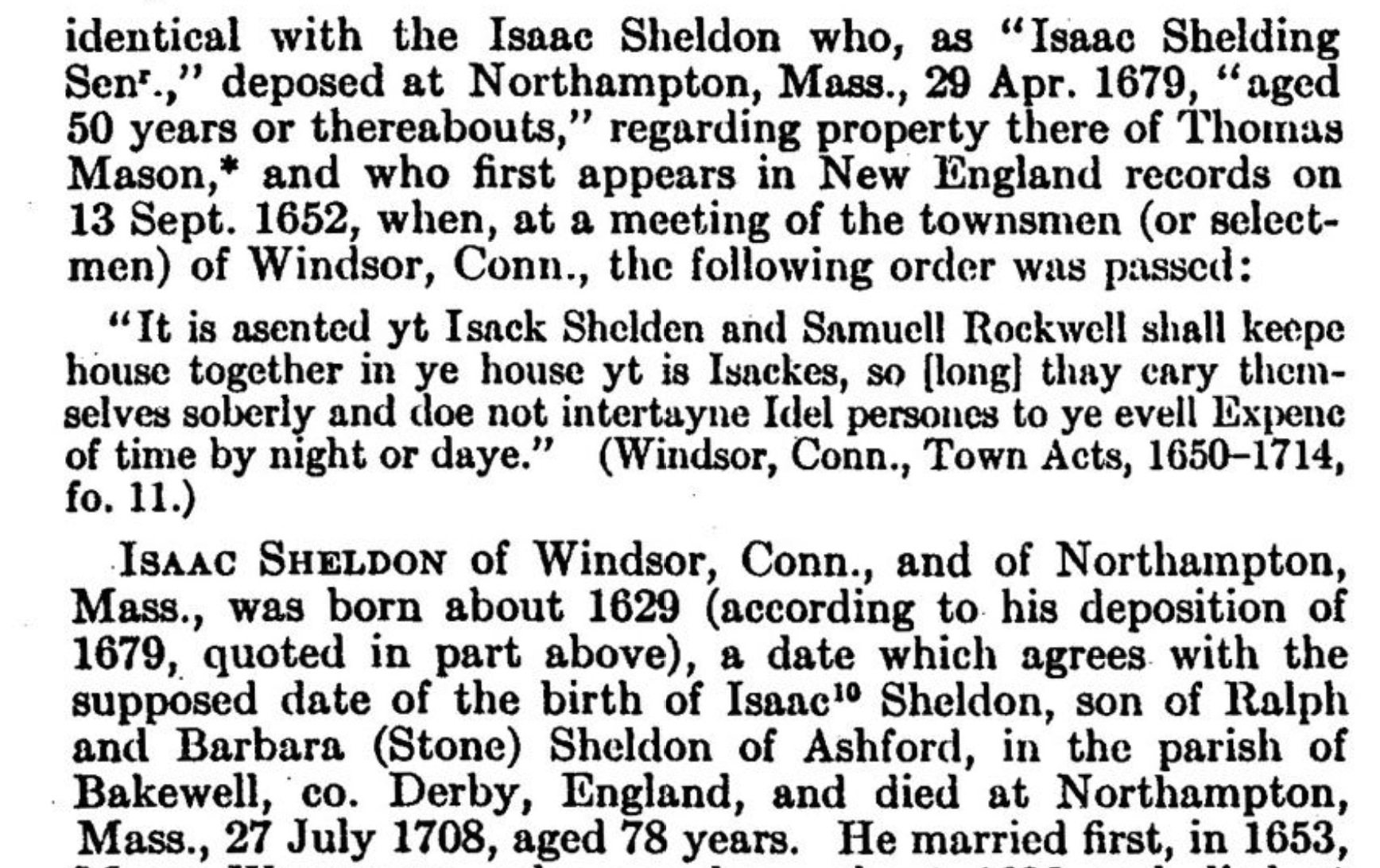
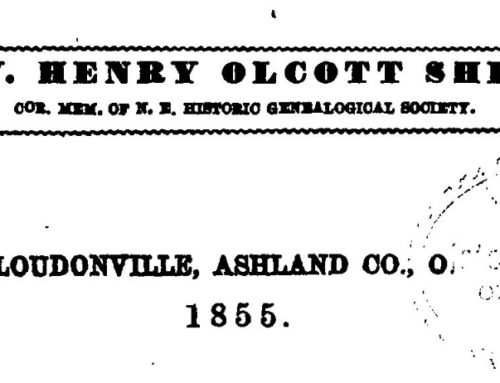

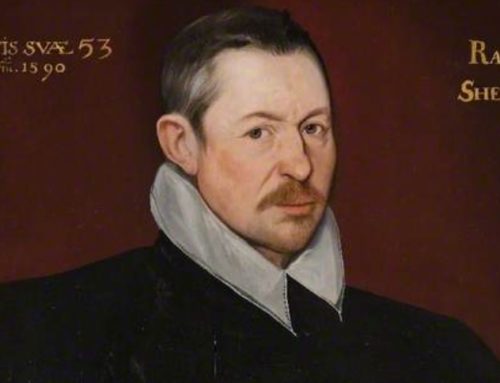

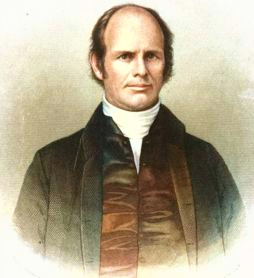
Leave A Comment
You must be logged in to post a comment.